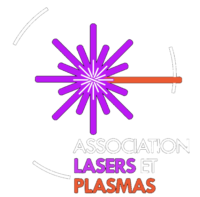PI: Dr. Michel Koenig, LULI, Palaiseau, France
Status: Started in February 2021
Summary of the proposal: Massive hot stars can intensively illuminate giant molecular clouds, provoking their ionization and photo-evaporation. These ablation fronts are difficult to model but can be studied in laboratory. Here, we propose to generate a highly radiative shock in a gas cell that will interact with dense matter. The strong radiative flux generated by a high velocity radiative shock mimicking the nearby hot star will interact with a ball or microballoon to simulate the molecular cloud.
We have produced many radiative shocks driven by high-power lasers using our original gas-cell target. As a result, we understand radiative precursor formation. Preparatory experiments on the Gekko laser have produced the interaction of a radiative precursor with an obstacle. Further preparatory experiments will use the Nano2000 laser or ORION, with a combination of optical and x-ray diagnostics, to deeply investigate the interaction zone before any LMJ shots.
We propose to use LMJ to observe the influence of radiation on the obstacle in a highly radiative regime not achieved on any previous experiments. These experiments will initiate a program for astrophysical relevant radiation hydrodynamics on LMJ/Petal.
